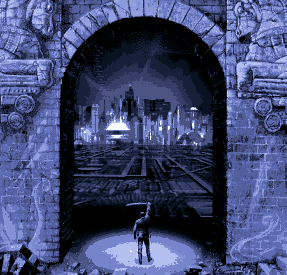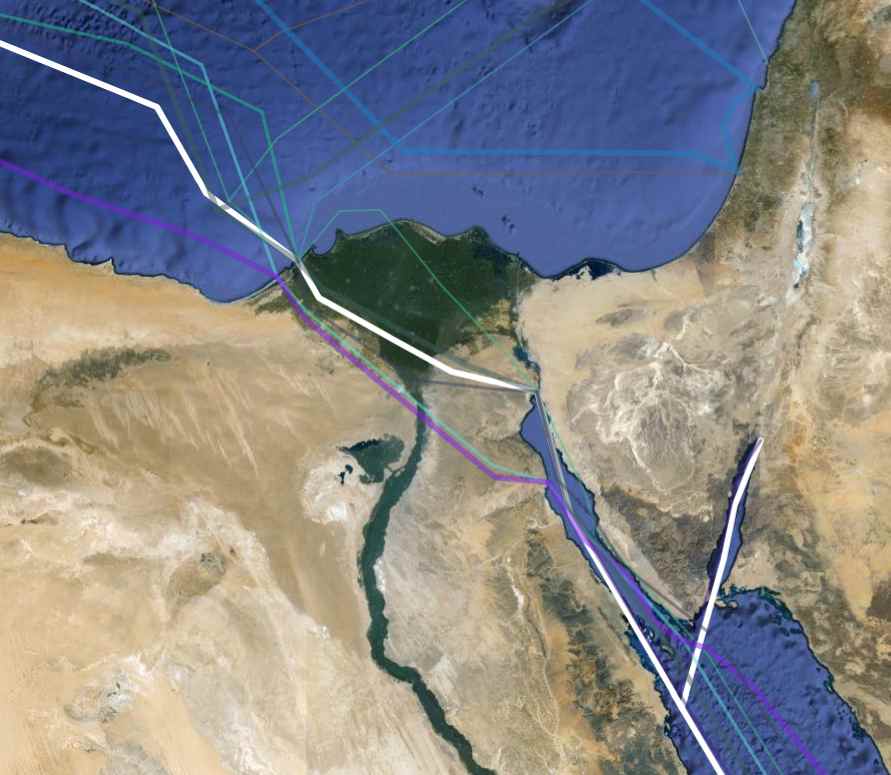I'm getting my PhD in economic geography for 3 reasons: (1) I'm terrified of the real world and decided to stay in school forever, (2) that one scene from West Wing where they talk about maps and (3) Neal Stephenson. Stephenson is generally considered to be a sci-fi author. This is not particularly true, at least half of his books aren't so much science fiction as they are fiction about science, but you'll find his books shelved in the Sci-Fi section of bookstores.But the majority of his works, both his fiction and essays, can also be understood as economic fiction. His books' stories and plots examine the deep connections between changes in the economy, changes in technology, and changes in society. In this series, I'm going to go through examples of this the Collected Works of Neal Stephenson. In this post, I'm talking about The Big U, "Mother Earth...Mother Board", and Snow Crash. In the next post, I'll discuss The Diamond Age and Cryptonomicon, before moving on the Baroque Cycle in the third post.
The Big U (1984)
This is Stephenson's first book, and it shows. There's actually no connection between this book — a parody of big universities involving hacking mainframes, nuclear waste, Rats of Unusual Size, and anarchy — and economic geography. But, the main character was a geography professor. I can't say there are many books featuring geographers who engage in gun battles with cultists in the middle of university student centers (authors, this is a problem. Fix it). Stephenson, by the way, got his degree in geography, though it is said he chose geography over physics because there was less fighting over the geography department's mainframe time.
Mother Earth, Mother Board (1996)
This is an epic piece of long form journalism. Some consider it one of the best magazine articles ever. I consider it one of the best essays about economic geography ever written (not that this is a particularly competitive category.) It deals with topics as diverse as colonialism, commodity chains, and the physical manifestation of the internet. Stephenson follows the construction of one particular submarine cable that stretches from the east coast of the US, to Europe, around Africa, and then across the Indian Ocean to Japan.
What I love about this essay is how it avoids fetishizing the technology. It would be far to easy to only concentrate on what a technological marvel this cable is. But Stephenson doesn't do that. Instead he shows the complex network of workers, companies, technologies, and governments that surround the process of laying a 14,000 mile cable. From glass-walled board rooms in London to decaying government buildings in Cario to ex-pat bars on Lan Tso Island to villages that make manhole covers in the jungles of Thailand. This isn't a story about a cable, but a web of social and economic relations that bring the cable into existence and put it exactly where it needs to go. This is the essence of modern economic geography.
But more than that, Stephenson shows the connections between today's submarine cables and the original telegraph cables laid by Lord Kelvin. These are not simply a case of linear technological development, but rather an example of the relationship between science, technology and colonialism. The development of the original telegraph lines wasn't just about finding the right kind of copper to send electrons down, it was about finding the right kind of rubber and gutta-percha (a kind of sap) to wrap that copper in to protect it from the oceans and the right islands that the cables can land on and get their signals amplified. The British harvested this gutta-percha from their colonies in Malaysia, after transplanting the rubber trees from Brazil, and repeating stations were set up on the various islands the British controlled throughout the Pacific and Indian oceans. Without the empire, these wires could not span the globe to connect the empire. One only needs to look at Guam to see that this is still important today.
I think this is a great example of modern economic geography is because it does more than just talk about where on earth the cables are (not to say that isn't a very interesting pursuit). It shows that these cables, these long, thin strands of ultra-pure glass that allow us to communicate at nearly the speed of light, don't exist in isolation. Rather, it's the outcome of processes that not only span the globe, they span class relations and government and corporate regimens. Cables not only have a physical geography, they also have a political, historical and economic geography. The technology can't be understood without understanding the social and economic contexts that produced it, and we now can't understand these contexts without reference to this technology.
Snow Crash (1992)
This book put Stephenson on the map, and ironically doomed him to always be known as a sci-fi author. Snow Crash was critical in the development of the cyber punk mythos and aesthetic. I won't try to summarize the plot, but only note that Stephenson pretty much predicted Second Life, though he maybe underestimated the importance of cat pictures and furries on the internet.

Snow Crash is a great example of combining the "distance is dead" hypothesis that was so popular in the 1990s and early 2000s and Thomas Fridman's The World is Flat obsession with globalization and free trade and brining it to its logical conclusion. The idea that captivated a lot of people was that the interent would be the end of geography. Now that we can communicate instantly, why does it matter where we work or where we live. Technology, combined with free trade and free migration, be the end of the city or the nation. Countries will specialize in what they do best, regardless of their physical geography. ere's a quote from Snow Crash that that sums it up nicely:
When it gets down to it — taking trade balances here ‚ once we've brain-drained out technology into other countries, once things have event out, they're making cars in Bolivia and microwave ovens in Tadzhikistan and selling them here — once our edge in natural resources has been made irrelevant by giant Hong King ships and dirigibles that can ship North Dakota all the way to New Zealand for a nickel — once the Invisible Hand has taken all those historical inequities and smeared them out into a broad global layer of what a Pakistani brickmaker would consider prosperity — y'know what? There are for things that we do better than anyone else:
- Music
- Movies
- Microcode (software)
- High-speed pizza delivery
Snow Crash takes place in a post-nation-state world, brought about by global trade spread by technological development. The movement of economic activity online, combined with encryption and untraceable digital currency (a prominent point of his 1999 book, Cryptonomicon), decimated nations' tax base, shrinking them to near non-existence. In place of the state, Franchise-Organized Quasi-National Entities (FOQNUEs) arise. These are essentially gated communities on steroids, communities with their own private police forces, security systems, and application processes. Along side the FOQUNEs are franchies, many owned and operated by the Mafia© or the Crips©. After all, when the government started to shrink, they also decided that it wasn't their business to tell people what drugs that could or could not use, or what monopolies could or could not be abused. Private organizations now take care of all of that.
Snow Crash's universe is a pretty good, if silly, example of Roll Out and Roll Back Neoliberalism. Neoliberalism is a pretty popular word nowadays, it refers to a political strategy and regime aimed at reducing perceived barriers to trade and business. This takes the form of trying to shrink the role of the state by eliminating non-core activities (like social welfare and education) and privatizing what remains. The idea is that the private sector, which is directly responsible to market demands, can provide these services much cheeper than governments, which are responsible to voters and political blocs. Of course, this doesn't work out in practice, as many people can tell you. Roll Out neoliberalism happens after an economic crisis like a currency devaluation, someone comes in (usually the IMF or World Bank) and agrees to bail out a country in exchange for structural reforms like the removal of tariffs or labor protections. Thus, the neo-liberal system is rolled out on a population that isn't in a position to resist it. After the bailout, the role and functions of government are slowly chiselled away, parts of it are privatized and the government has less and less control over the economy, giving actors in the private sector even more power to enact even more neoliberal reforms.

There's a great quote midway through the book that illustrates this change of mentality
They say that in D.C., all the museums and the monuments have been concessioned out and turned into a tourist park that now generated about 10% of the Government's revenues. The Feds could run the concession themselves and probably keep more of the groos, but that's not the point. It's a philosophical thing. A back-to-basics thing. Government should govern. It's not the entertainment industry, is it? Leave entertaining to Industry weirdos — people who majored in tap dancing.
It's not hard to imagine this occurring in the Snow Crash Universe. The increasing use of digital currency (which is discussed both in Cryptonomicon along with short stories like The Great Simolian Capar) undermines the dollar and decimates the tax base. For what ever reason, it's not politically possible to enact a value added tax. To make up the difference, the government prints too much money and hyper inflation ensues. In response, the government decides that it needs to fundamentally change itself, getting back to its core functions (in the book, this core function is producing massively inefficient computer code). Everything else, the highways, the national parks, are sold off for hard cash and law and order is turned over to private investors. What used to be free of change, like driving on a road or having police show up to solve a crime, now requires a fee or payment. This is what Naomi Klein talked about in her book The Shock Doctrine: temporary economic, social, or environmental crises are used to justify neoliberal reforms.

